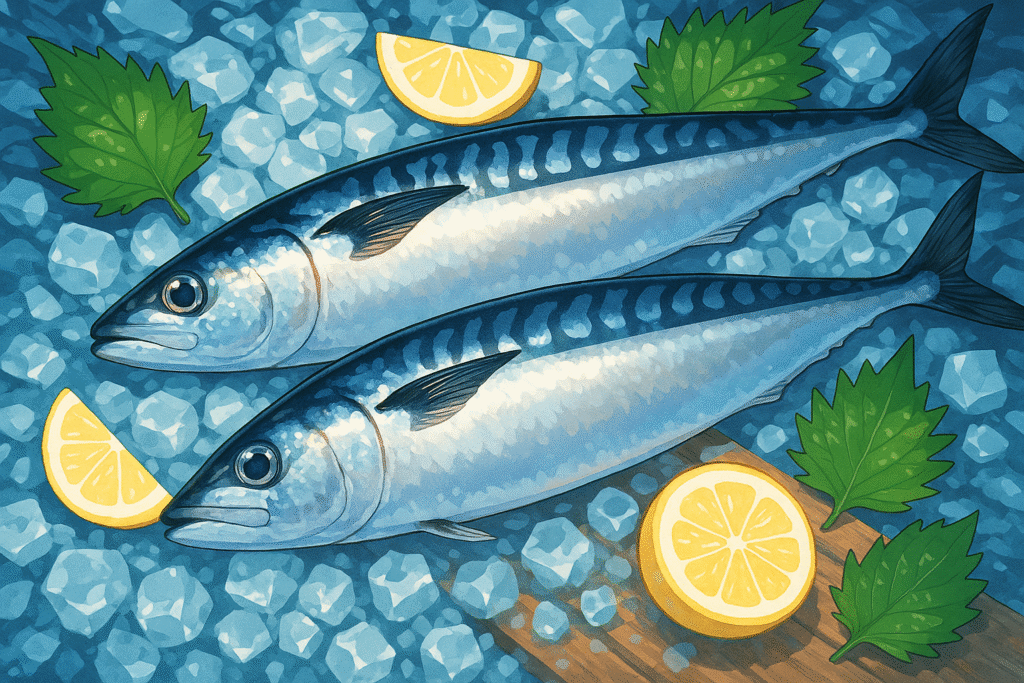Mackerel (Scomber scombrus (Atlantic), Scomber japonicus (Pacific))

About Mackerel
Mackerel is the unsung hero of oily fish — flavorful, fast-cooking, and rich in good fats. It’s got bold, meaty flesh with a slightly sweet, oceanic punch, perfect for grilling, curing, or raw preparations.
Though often overshadowed by salmon or tuna, mackerel has a huge global fanbase — especially in Japanese, Korean, Nordic, and Mediterranean cuisines. If you love food with personality, mackerel delivers.
The History of Mackerel
Mackerel has been fished and eaten for millennia. Ancient Greeks and Romans salted and fermented it into garum, their famous fish sauce. In Japan, mackerel (saba) is central to regional sushi and bento boxes, while in Korea, it’s pan-fried with a crisp skin and spicy dipping sauces.
Because it spoils quickly, many traditional preparations involved smoking, pickling, or salting. In the UK, smoked mackerel is a staple; in Morocco, it’s grilled over coals and served with harissa.
Mackerel was once “poor man’s fish” — now it’s recognized for its rich flavor and sustainability.
The Science of Mackerel
Mackerel is high in omega-3 fatty acids (EPA and DHA), which give it both nutritional value and a silky mouthfeel. It also contains histidine, which can break down into histamine if not stored properly — hence the fish’s reputation for quick spoilage.
Its silver-blue skin is rich in inosinic acid, which boosts umami, especially when grilled or broiled.
The Geography of Mackerel
Found in both Atlantic and Pacific oceans, mackerel is a migratory fish that thrives in cold, nutrient-rich waters. Atlantic mackerel is common in Europe and the US East Coast; Pacific mackerel appears in Japanese and Californian waters.
Because of its short shelf life, it’s often consumed fresh near the coast — or preserved in cans, oil, or smoke inland.
Varieties of Mackerel
Top varieties of Mackerel
Atlantic Mackerel
A cold-water species with firm, flavorful flesh and high fat content. Ideal for smoking or grilling.
Pacific Mackerel (Saba)
Slightly leaner, commonly cured or served raw in Japanese cuisine. Its flavor intensifies when aged.
Spanish Mackerel
Found in warmer waters; larger and slightly milder in taste. Often grilled or made into spicy fish stews.
King Mackerel (Kingfish)
Meatier and larger, often used in steaks. Best when grilled or smoked, though it can contain higher mercury levels.
Indian Mackerel
Popular in South Asia and Southeast Asia, with a bolder flavor and smaller size — commonly fried or curried.
FAQs All your questions about Mackerel: answered
FAQs: All Your Questions About Mackerel Answered
Is mackerel safe to eat raw?
Yes — but only very fresh, sushi-grade mackerel, often cured in vinegar first.
Why does mackerel spoil quickly?
Its high oil content and enzymes make it prone to spoilage if not chilled immediately.
Is mackerel healthy?
Extremely — it’s one of the best sources of omega-3s, protein, and vitamin D.
Can you freeze mackerel?
Absolutely. It freezes well if gutted and packed properly.